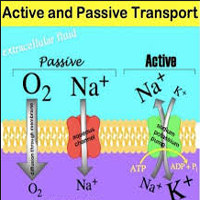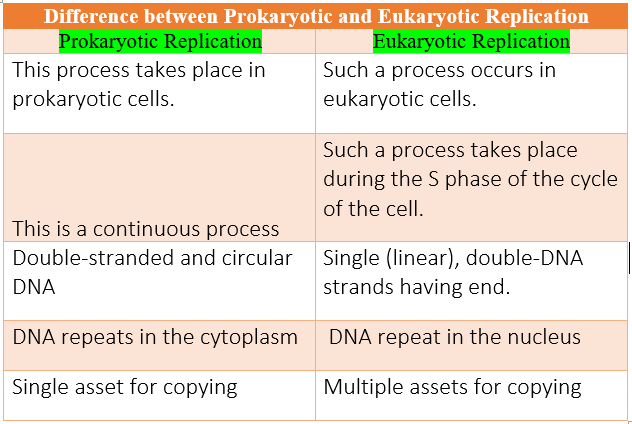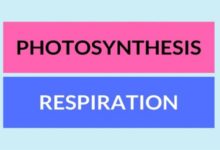Roles of Essential Elements And Nutritional Disorders of Plants
Each essential element participates in a specific set of metabolic reactions. Gut generally the essential elements function as constituents of compounds, in the activation of enzymes, and in contributing to the osmotic potential of plant cells. However, some other roles include the ability of divalent calcium or magnesium cations to modify permeability of plant membranes and regulation of key enzymes by calcium in the cytosol.
[wp_ad_camp_1]
Nutritional Disorders of Plants
Because each essential clement perform one or more specific internal roles, inadequate supply of an essential element result in a nutritional disorder, For example, Peppermint plants grown in nitrogen deficient nutrient solutions showed production of very low amount of alcohol-soluble amino acids and amides whereas those grown in sulphur deficient nutrient Solutions have high amounts of these amino acids.
Deficiency Symptoms (Salt Burns)
In addition to alterations in metabolic patterns, several deficiencies of essential elements produced a set of characteristic effects in external appearance of leaves, stems, roots, flowers and fruits.
These characteristic symptoms are called deficiency symptoms and include stunted growth, chlorosis (failure of leaves to produce normal amounts of chlorophyll), mottling of leaves, abnormal curling of leaves, development of abnormal leaf discolorations, development of regions of necrosis (blackening and decay of tissue), premature drying and withering of leaves, and premature senescence (maturation) of leaves and flowers.
NITROGEN
Soils are more commonly deficient in nitrogen than any other element. Two major ionic forms of nitrogen are absorbed from soils: nitrate (NO1) and ammonium (NH4+).
[wp_ad_camp_2]
Role of Nitrogen
Nitrogen is associated with many plant cell components such as amino acids and nucleic acids.
Deficiency Symptoms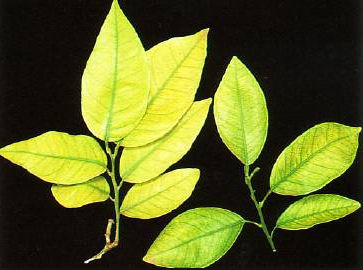
- Stunted Growth: A characteristics deficiency symptom is stunted growth. The plants develop slender woody stems due to accumulation of carbohydrates, because the carbohydrates are not used in the synthesis of amino acids or other nitrogenous compounds.
- Chlorosis: In many plants the first symptom of nitrogen deficiency is chlorosis, i. e., yellowing of the leaves, especially in older leaves near the base of the plant. In extreme deficiency of nitrogen the leaves becomes completely yellow and then fall off the plant.
- Purple or red coloration of veins due to anthocyanin.
- Lowering of respiration rate.
- Flower formation is delayed or suppressed.
- Premature dropping of fruits, sterility or fruits are weak.
- Branching or tillering is suppressed due to dormancy of latreral buds.
Excess Nitrogen
Plants grown with excess of nitrogen usually have dark-green leaves and show abundant foliage, poorly developed root system, therefore a high shoot-to-root ratio, as in potato.
[wp_ad_camp_3]
PHOSPHORUS
Phosphorus acts as limiting element in soils, second to nitrogen. It is absorbed primarily as the monovalent phosphate anion (H2P04) and less rapidly as divalent anion (H2P04). The availability of these two forms of ions is controlled by soil PH.
Role of Phosphorus
Phosphorus (as phosphate) is an integral component of a number of important compounds present in plant cells, such as sugar-phosphates used in photosynthesis and respiration and phospholipids found in plant membranes. It is also a component of nucleotides used n plant energy metabolism (ATP), NADP and in the molecules of DNA and RNA.
Deficiency Symptoms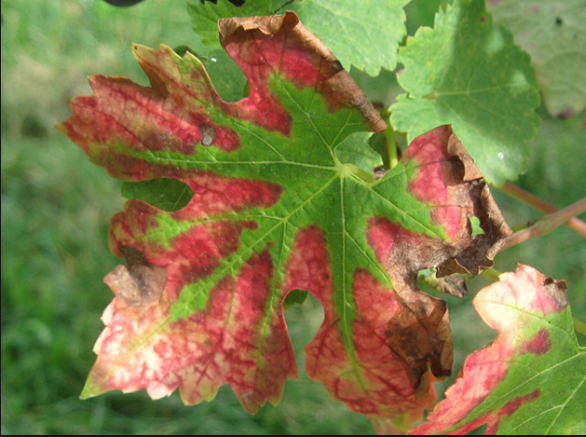
The phosphate accumulate in younger leaves and developing flowers and seeds, therefore deficiency symptoms occur often in mature leaves first.
- Characteristic symptoms of phosphorus deficiency include stunted growth in young plants
- Development of dark green colour in leaves.
- The leaves may develop small spots of dead tissue (necrotic spots).
- Anthocyanins may accumulate due to shortage of phosphorus but does not lead to chlorosis; instead a dark greenish-purple coloration develops.
- Accumulation of soluble carbohydrates.
- Increase in activity of enzyme phosphates.
- Increase in the bulk of pith.
- In some plants deficiency results in delay in maturity of the plants. This results in development of non- woody slender stems.
[wp_ad_camp_4]
Excess Phosphorus
Abundant supplies of phosphorus speed up maturity. Thus, a close interaction between phosphorus and nitrogen exists regarding maturity, excess nitrogen delay maturity. The root growth is often increased relative to shoot growth. This is in contrast to effects of excess nitrogen.
POTSSIUM
After nitrogen and phosphorus, soils are usually most deficient in potassium. That is why commercial fertilizers contain high %age of these elements.
Role of Potassium
Potassium plays an important role in regulation of osmotic potential of plant cells. It acts an activator for enzymes involve in respiration and photosynthesis. It also activates enzymes required to form starch and proteins. It has very important role in opening and closing of stomata.
Deficiency Symptoms
- The deficiency symptoms appear first in older leaves and first observable deficiency symptom is mottling or marginal chlorosis, which then develops into necrosis (formation of dead tissue) that occurs primarily at the leaf tips and margins and between veins.
- The stems of potassium- deficient plants may be slender, weak and have short internodes.
[wp_ad_camp_5]
- Yellowing and mottling of leaves.
- Less resistance of disease.
- Accumulation of amino acids and sugars.
- Reduction in protein synthesis.
- Decrease in respiration rate.
- Decrease in photosynthesis
- In corn, the roots become susceptible to fungal attacks duo to shortage of potassium and results in lodging (plant easily bent to the ground).
SULPHUR
Sulphur is absorbed from sols as divalent sulfate ions (SO42). Sulphur can also be absorbed by leaves through stomata as gaseous sulphur dioxide which is converted into bisulphite (HSO3–) when it combines with water present in the cells. Bisulphite is oxidized further to sulfuric acid (H2SO4) which has toxic effects of acid rains. Enough sulfate is present in the soils, therefore sulphate-deficient plants are uncommon.
Role of Sulphur
Sulphur in plants occurs in proteins specifically in amino acids cysteine and methionine that are building blocks for proteins. Similarly it is an essential component of vitamins thiamine and biotin, and coenzyme A, a compound necessary for respiration, and for synthesis and breakdown of fatty acids.
Deficiency Symptoms
As the sulphur cannot be redistributed easily from mature tissues in some Species, therefore deficiency symptoms are usually first noted in younger leaves, The deficiency symptoms are similar to those of nitrogen deficiency and include chlorosis, stunted growth and accumulation of anthocyanin. In some species the chlorosis may occur at once in all the leaves or on older leaves first.
[wp_ad_camp_1]
CALCIUM
Calcium is absorbed as divalent Ca2+. Most soils contain enough calcium for adequate plant growth. But acidic coils where high rainfall occurs, the soils are deficient of calcium.
Role of Calcium
The Calcium s used in the synthesis of new cell walls, particularly in middle lamella separating newly divided cells It is also used in formation of mitotic spindle during cell divisions. Plant membranes require calcium for their normal functioning. It is considered that calcium acts as a second messenger for a number of plant responses to both environmental and hormonal signals. It may bind to calmodulin. A protein found in cytosol, to form calcitun-calmodulin complex that is considered to be involved in regulation of many metabolic processes.
Deficiency Symptoms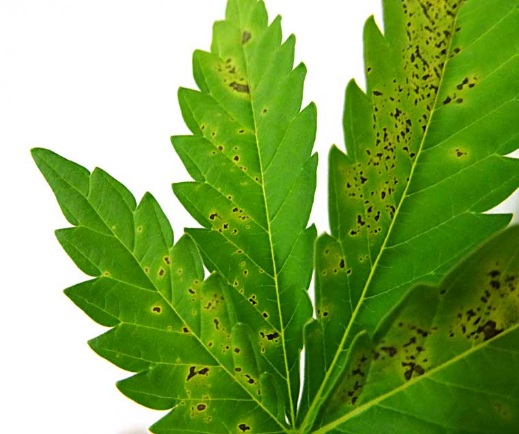
The deficiency symptoms are more prominent in young tissues especially in meristematic zones of roots, stems, and leaves; perhaps calcium is required to form middle lamella and mitotic spindle apparatus there.
- Necrosis: Characteristics symptoms or calcium deficiency include necrosis of the tips and margins of young leaves, followed by the necrosis of terminal buds.
- Chlorosis: Necrosis is followed by chlorosis and downward hooking of young leaves. The young leaves appear to be deformed.
- Poor Root System: Root system of a calcium deficient plant is brownish, short and highly branched.
[wp_ad_camp_2]
- Rapid disintegration of growing tips of root and shoots.
- Uptake of high amount of Mg which cause toxity. It is antagonistic to Mg.
- Translocation of carbohydrate is reduced.
- New walls are not formed and hence growth of plant restricted.
- Wither tip or hooking of leaf tip.
MAGNESIUM
Magnesium is absorbed as divalent Mg2+. Magnesium is almost never limiting to the plant growth in soils.
Role of Magnesium
In plant cells, magnesium has a specific role in the activation of enzymes involved in respiration, photosynthesis, and synthesis of DNA and RNA. Magnesium is also a part of the porphyrin component of the chlorophyll. It combines with ATP and allows it to function in many reactions.
Deficiency Symptoms
The deficiency symptoms appear first in older leaves.
- The characteristic deficiency symptom of magnesium is an interveinal chlorosis, i. e. chlorosis of mesophyll cells present between the vascular bundles (veins) because the vascular bundles retain their chloroplast for longer periods. If the deficiency prolongs the leaves may become yellow or white. .
- Another deficiency symptom is premature fall of the leaf (leaf abcission).
IRON
Role of Iron
Iron plays an important role as a component of enzymes concerned with the transfer of electrons (redox reactions), such as cytocl3romes. It undergoes alternative oxidation and reduction between the Fe+ and Fe+ states as it acts as electron carrier.
Deficiency Symptoms
As the iron cannot be readily’ mobilized from older leaves, the deficiency symptoms occur initially on younger leaves.
[wp_ad_camp_3]
- Characteristic symptoms of iron deficiency involve interveinal chlorosis because iron s required for chlorophyll synthesis. Under conditions of extreme deficiencies or prolonged deficiency, the veins may become chlorotic so that the whole leaf becomes white in colour.
- Iron precipitates in older leaves as insoluble oxides or phosphates. One abundant and stable form of iron in leaves is stored in chloroplasts as an iron-protein complex called phytoferritin.
COPPER
Copper is absorbed both as the divalent cupric (Cu) on in aerated soils or as the monovalent cuprous ion in wet soils with little oxygen. Divalent cupric is chelated in various soil compounds. The copper is needed in small amount by the plants.
Role of Copper
Like iron, copper is associated with enzymes involved in electron transfer, for example plastocyanin involved in electron transfer during the light reactions of photosynthesis, and cytochrome oxidase, a respiratory enzyme, present in mitochondria.
Deficiency Symptoms
- The initial symptom of copper deficiency is the production of dark green leaves, which may contain necrotic spots. These spots first appear at the tips of the young leaves and then extend downward along the leaf margins. The young leaves may also be twisted or malformed.
- Under extreme deficiency, premature loss of leaves (leaf abcission) may occur.
BORON
Boron is absorbed from soils as undissociated boric acid.
Role of Boron
Precise function of boron in plant metabolism is unknown; however there is evidence that boron is involved in synthesis of nucleic acids (RNA and DNA), hormone responses and membrane functions. Boron plays an undetermined but essential role in elongation of pollen tubes.
[wp_ad_camp_4]
Deficiency Symptoms
Plants deficient for boron show characteristic deficiency symptoms. These symptoms are affected by age of the plants and differ from species to species.
- The deficiency symptoms include black necrosis of the young leaves and terminal buds. The necrosis starts at the base of the leaf blade.
- In some plants apical dominance is lost so that the plant becomes highly branched; however the terminal apices soon become necrotic due to inhibition of cell division.
MANGANESE
Manganese exists in various oxidation states as insoluble oxides in soils, but it is absorbed largely as the divalent manganous cation (Mn2) after reduction of Mn in these oxides as the root surface,
Role of Manganese
Manganese activate a number of enzymes in plants particularly decarboxylases and dehydrogenases involved in the Krebs cycle. The best defined function of Mn is in the reaction in which oxygen is produced from water during the process of photosynthesis. The manganese plays structural role in the chloroplast membrane system.
Deficiency Symptoms
The major deficiency symptom of manganese deficiency is interveinal chlorosis associated with the development of small necrotic spots on younger or older leaves depending upon species
ZINC
Zinc is absorbed as divalent Zn2, probably often from zinc chelates.
Role of Zinc
Many enzymes (more than eighty) require zinc for their activity. It is also required for chlorophyll synthesis in some plants.
Deficiency Symptoms
- Zinc deficiency results in reduction of intermodal growth so the plants show rosette habit ci growth. The leaf margins are often distorted and puckered in appearance.
- Interveinal chlorosis of older leaves is often found in leaves of maize, sorghum, beans, and fruit trees. The chlorosis is usually followed by development of white necrotic sots.
